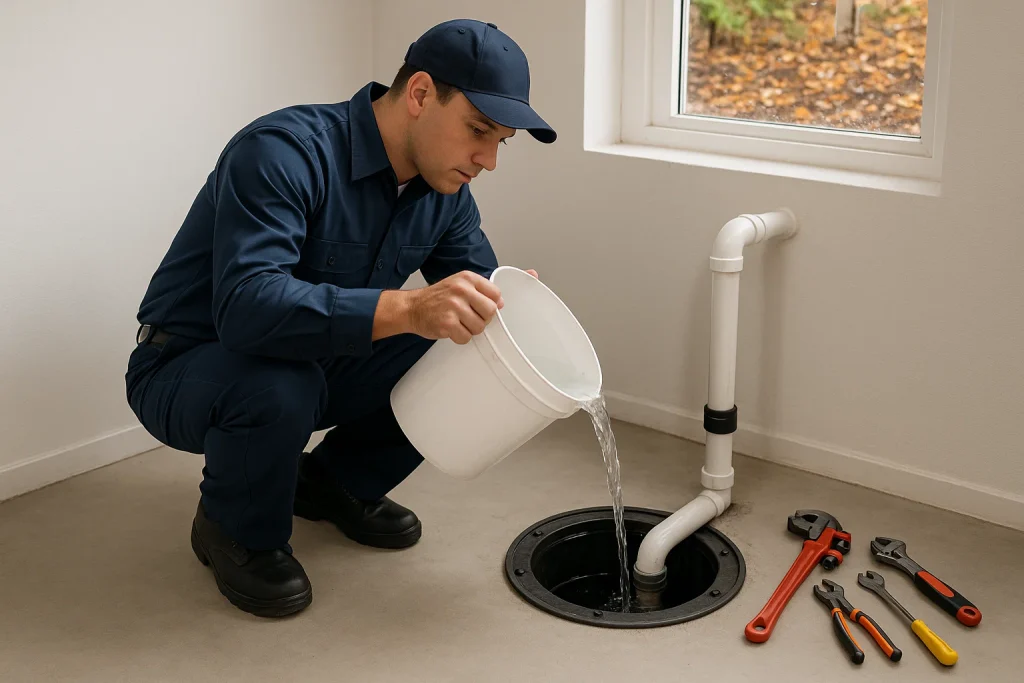As the crisp autumn air gives way to winter chills, your home’s plumbing system faces new challenges. Cold weather can strain pipes, fixtures, and appliances in ways that warmer months never do. At Charles Chester Plumbing & Heating, we’ve seen how a little preparation goes a long way toward preventing costly repairs. Here are five common issues to monitor as temperatures fall, along with practical steps to keep everything flowing smoothly.

Frozen Pipes
When outdoor temperatures drop below 20°F for extended periods, water inside exposed or poorly insulated pipes can freeze and expand. This pressure often leads to bursts, causing water damage that spreads quickly through walls and ceilings.
Inspect pipes in unheated areas like basements, crawl spaces, attics, and exterior walls. Wrap them with foam sleeves or heat tape, and keep garage doors closed if lines run through them. On especially cold nights, let faucets drip slightly to relieve pressure. If a pipe does freeze, shut off the main water valve immediately and call for professional thawing to avoid cracks.
Clogged Drains from Fall Debris
Falling leaves, twigs, and outdoor dirt find their way into gutters and downspouts, but they also wash into exterior drains and sewer lines. Once inside, this organic matter mixes with grease or hair and hardens in cooler temperatures, creating stubborn blockages.
Clear gutters and downspouts weekly during leaf season. Install mesh screens over drain openings to catch debris before it enters the system. Inside the home, avoid pouring fats down kitchen sinks and use drain strainers in showers. A slow drain that gurgles or backs up signals a developing clog—address it early with a plunger or enzyme cleaner before it requires snaking.
Sump Pump Overload
Heavy fall rains followed by snowmelt can saturate the ground, pushing excess water toward your foundation. A sump pump that hasn’t been tested may fail exactly when you need it most, leading to basement flooding.
Test your pump monthly by pouring a bucket of water into the pit; it should activate and discharge outdoors. Check that the discharge pipe extends far enough from the foundation and remains free of ice buildup. Replace backup batteries annually and consider a water-powered backup system for power outages during storms.
Water Heater Strain
Colder incoming water forces your heater to work harder to maintain set temperatures, increasing energy use and wear on components. Sediment that settled during summer can also harden, reducing efficiency and causing rumbling noises.
Flush the tank annually to remove mineral buildup—attach a hose to the drain valve and run several gallons until the water clears. Set the thermostat to 120°F for safety and efficiency. Insulate the tank and exposed hot-water pipes to retain heat. If you notice lukewarm water, leaks, or unusual sounds, schedule an inspection before demand peaks.
Condensing Furnace Drain Issues
High-efficiency furnaces produce condensate that drains through a small PVC line. In freezing weather, this line can ice over, triggering a shutdown code and leaving your home without heat.
Locate the condensate drain (usually near the furnace) and ensure it slopes downward without loops that trap water. Insulate the line if it passes through cold areas. Pour a cup of warm water through the drain monthly to confirm flow, and keep a spare air filter on hand—restricted airflow raises condensate production.
Staying ahead of these seasonal risks protects your plumbing and heating systems all winter long. The team at Charles Chester Plumbing & Heating is ready to inspect pipes, clean drains, test sump pumps, flush water heaters, and service furnaces before problems escalate.
Contact us today to schedule a maintenance visit and enjoy peace of mind through the coldest months.
